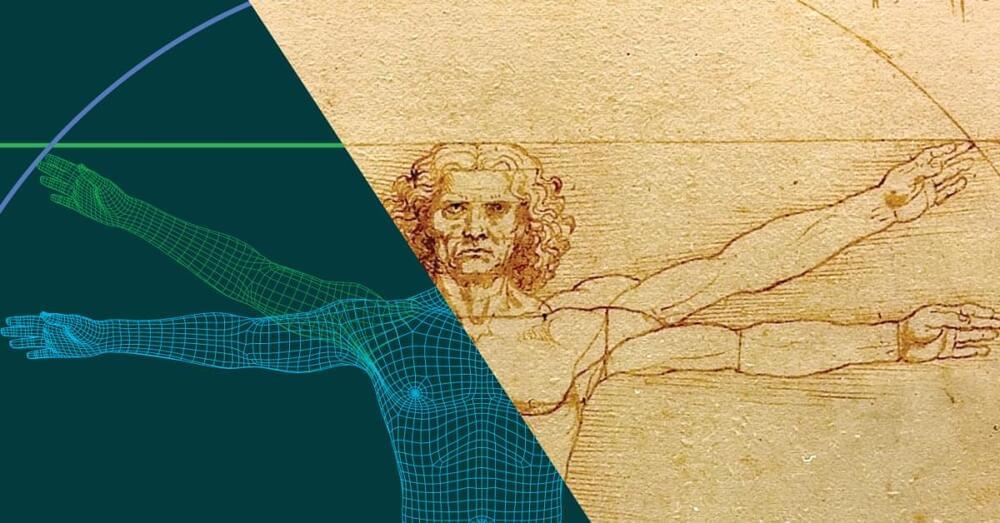Music has long been the language of love. Recent research suggests it could have many applications as the language of chemistry, too.



Who you gonna call?An Elon Musk deepfake video is doing the rounds on the internet again, hoping to trap crypto holders in a ‘get-rich-quick’ scheme and then steal their deposits, Bleeping Computer reported.
Channel 24 in Ukraine broadcast a deepfake of Ukrainian president Zelenskyy telling Ukrainians to put down their arms and surrender.


For the past fifty years of space exploration, mass spectrometry has provided unique chemical and physical insights on the characteristics of other planetary bodies in the Solar System. A variety of mass spectrometer types, including magnetic sector, quadrupole, time-of-flight, and ion trap, have and will continue to deepen our understanding of the formation and evolution of exploration targets like the surfaces and atmospheres of planets and their moons. An important impetus for the continuing exploration of Mars, Europa, Enceladus, Titan, and Venus involves assessing the habitability of solar system bodies and, ultimately, the search for life—a monumental effort that can be advanced by mass spectrometry. Modern flight-capable mass spectrometers, in combination with various sample processing, separation, and ionization techniques enable sensitive detection of chemical biosignatures.

Circa 2021
For the past fifty years of space exploration, mass spectrometry has provided unique chemical and physical insights on the characteristics of other planetary bodies in the Solar System. A variety of mass spectrometer types, including magnetic sector, quadrupole, time-of-flight, and ion trap, have and will continue to deepen our understanding of the formation and evolution of exploration targets like the surfaces and atmospheres of planets and their moons. An important impetus for the continuing exploration of Mars, Europa, Enceladus, Titan, and Venus involves assessing the habitability of solar system bodies and, ultimately, the search for life—a monumental effort that can be advanced by mass spectrometry. Modern flight-capable mass spectrometers, in combination with various sample processing, separation, and ionization techniques enable sensitive detection of chemical biosignatures. While our canonical knowledge of biosignatures is rooted in Terran-based examples, agnostic approaches in astrobiology can cast a wider net, to search for signs of life that may not be based on Terran-like biochemistry. Here, we delve into the search for extraterrestrial chemical and morphological biosignatures and examine several possible approaches to agnostic life detection using mass spectrometry. We discuss how future missions can help ensure that our search strategies are inclusive of unfamiliar life forms.
Biosignatures are the tantalizing chemical and physical imprints associated with life, and the possibility that life exists elsewhere beyond Earth drives us to search for these biosignatures on other planets and moons. The enterprise of space exploration, galvanized by the question of “Are we alone in the Universe?”, demands a stronger understanding of the diversity of biosignatures that life could express, thereby driving payload instruments on board astrobiology missions to offer broader and more advanced detection capabilities. In tandem with cutting-edge instrument platforms, research in data processing and data analysis on Earth-based (Terran) astrobiology analogs and on extraterrestrial materials also serves to increase the breadth of interpretations possible with mission data.
Cultivated meat company to bring tiger and zebra meat to your dinner plates this year!
Hey it’s Han from WrySci-HX going through the recent announcement that Primeval Foods will hold tasting events for lion, tiger and zebra meat in 2022. No animals harmed in the process! More below ↓↓↓
Subscribe!
Please consider supporting 🙏
Patreon: https://www.patreon.com/wrysci_hx.

Artificial intelligence (AI) is spreading through society into some of the most important sectors of people’s lives – from health care and legal services to agriculture and transportation.1 As Americans watch this proliferation, they are worried in some ways and excited in others.
In broad strokes, a larger share of Americans say they are “more concerned than excited” by the increased use of AI in daily life than say the opposite. Nearly half of U.S. adults (45%) say they are equally concerned and excited. Asked to explain in their own words what concerns them most about AI, some of those who are more concerned than excited cite their worries about potential loss of jobs, privacy considerations and the prospect that AI’s ascent might surpass human skills – and others say it will lead to a loss of human connection, be misused or be relied on too much.
But others are “more excited than concerned,” and they mention such things as the societal improvements they hope will emerge, the time savings and efficiencies AI can bring to daily life and the ways in which AI systems might be helpful and safer at work. And people have mixed views on whether three specific AI applications are good or bad for society at large.